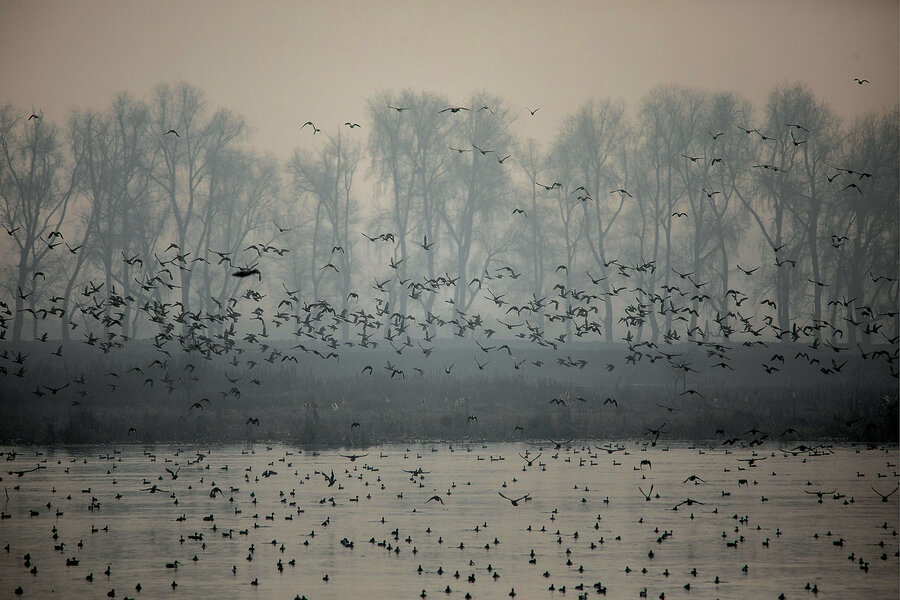Bird migration to Kashmir Valley brings a wonderland of wings
Loading...
| Srinagar, India
This past winter, more than 1 million migratory birds flocked to the Kashmir Valley. Their primary destination: Hokersar, the region’s second-largest wetland reserve, on the outskirts of Srinagar.
Over the years, more than 90 species of birds have made the trek to breed and feed at this crucial wintering ground, which is surrounded by freshwater marshes. The birds have taken flight from as far away as Siberia, China, and Eastern Europe. They include mallards, common teals, bitterns, graylag geese, pintails, shovelers, tufted ducks, and cormorants.
Nascent bird-watching clubs and bird-enthusiast tourists took note of the feathered friends, some of which are rare to Hokersar. In 2022, birder Reyan Sofi spotted and photographed a female common goldeneye. It was the first definitive record of the medium-sized duck landing in Kashmir since the turn of the 20th century.
Why We Wrote This
Winter skies can be gray and bleak. But in the Kashmir Valley, flocks of migrating birds brought cheer to this wetland reserve.
Bringing cheer and color to chilly, gray skies, more than 1 million migratory birds flocked this past winter to the Kashmir Valley. Their primary destination: Hokersar, the region’s second-largest wetland reserve, which spans 8 square miles on the outskirts of Srinagar.
Over the years, more than 90 species of birds have made the trek to breed and feed at this crucial wintering ground, which is surrounded by freshwater marshes. The birds have taken flight from as far away as Siberia, China, and Eastern Europe. They include mallards, common teals, bitterns, graylag geese, pintails, shovelers, tufted ducks, and cormorants.
Nascent bird-watching clubs and bird-enthusiast tourists took note of the feathered friends, some of which are rare to Hokersar. In 2022, birder Reyan Sofi spotted and photographed a female common goldeneye. It was the first definitive record of the medium-sized duck landing in Kashmir since the turn of the 20th century.
Wetland officials were buoyed by the birds’ lofty numbers amid a long dry spell in the region. “Last year we recorded over 1.3 million birds arriving in Kashmir,” warden Ifshan Dewan says. This winter’s parched conditions were a concern, he adds, but didn't much affect the winged turnout.
Why We Wrote This
Winter skies can be gray and bleak. But in the Kashmir Valley, flocks of migrating birds brought cheer to this wetland reserve.











